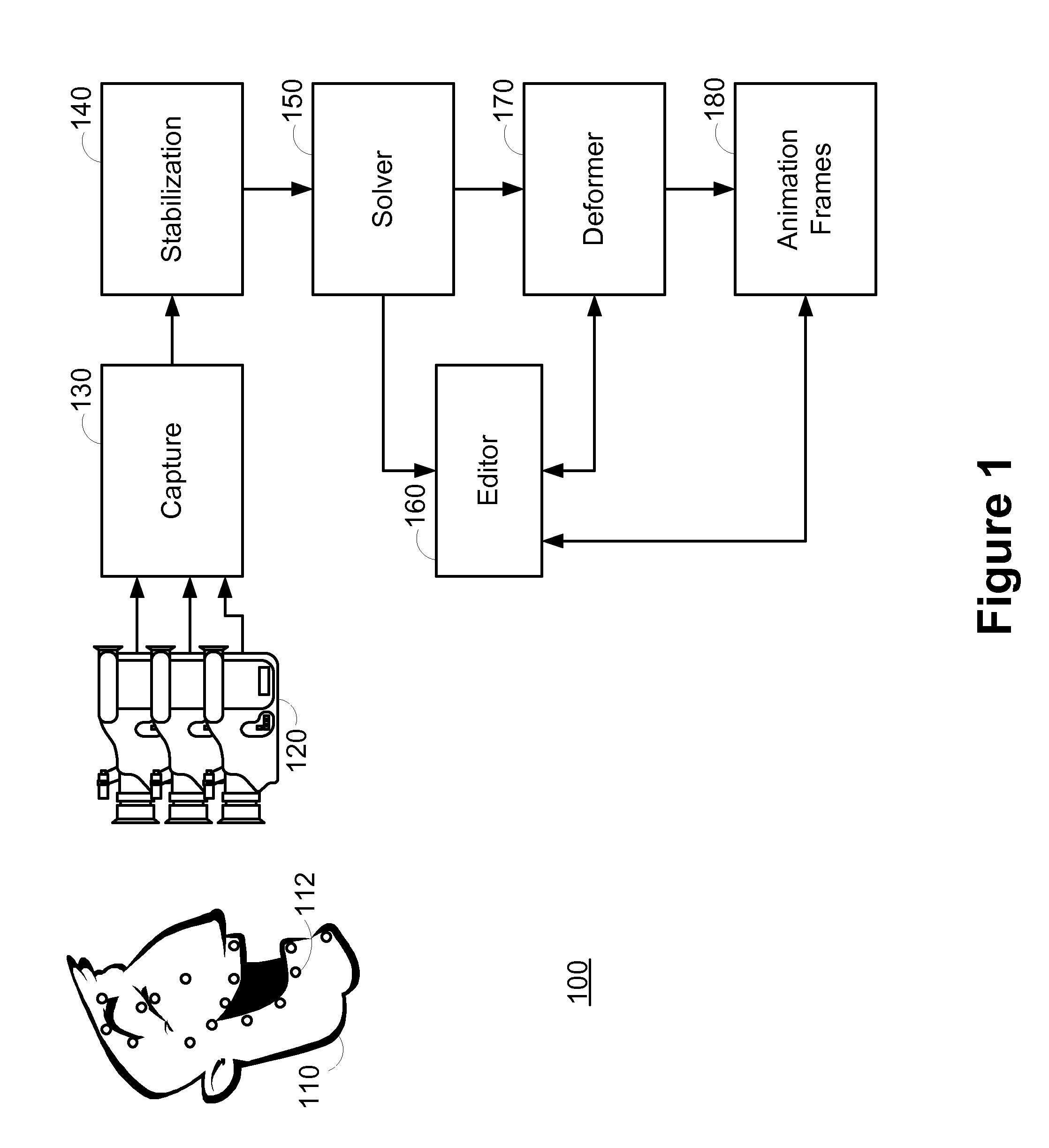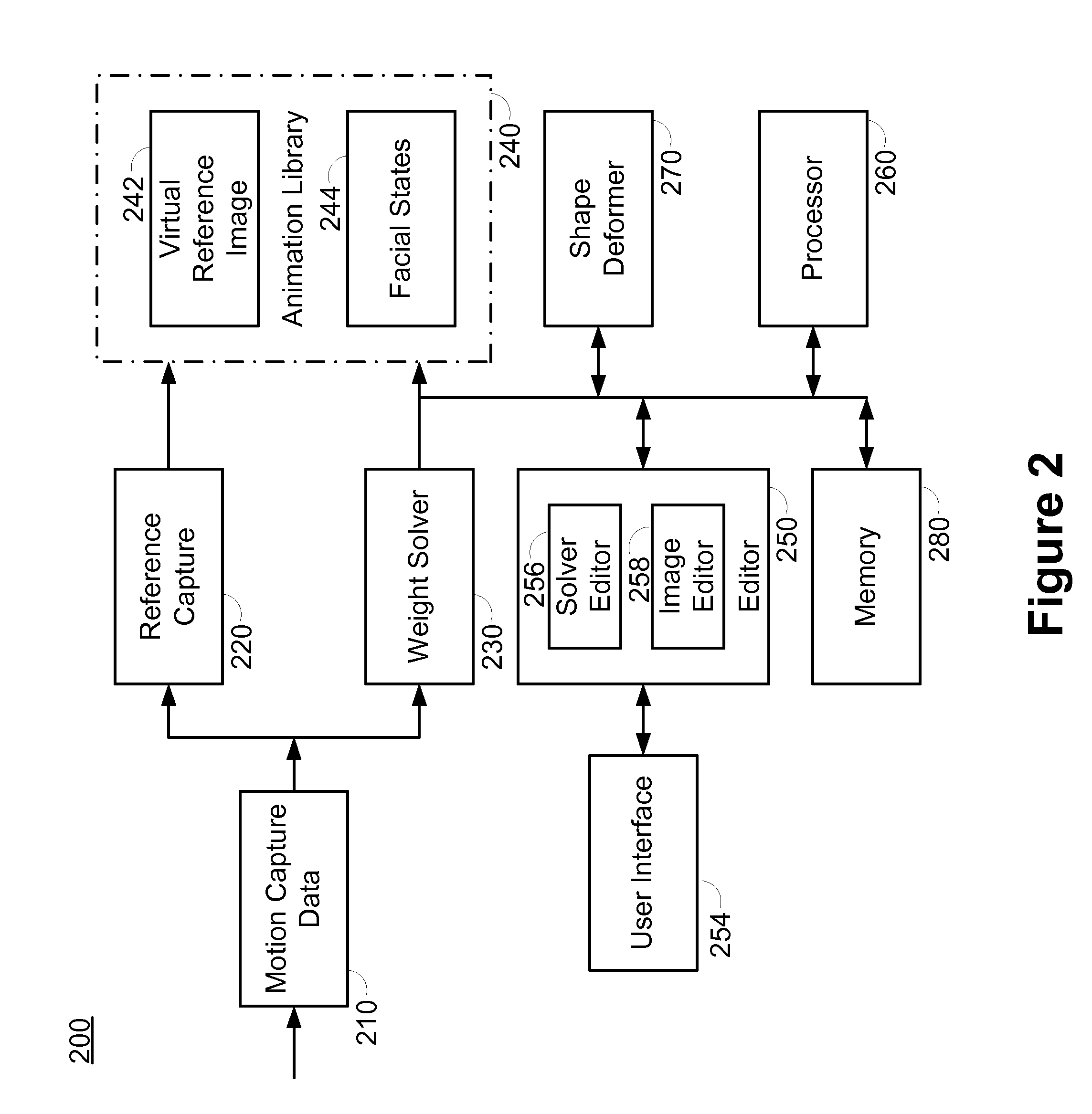Facial animation using motion capture data
a technology of motion capture and facial animation, applied in the field of facial animation using motion capture data, can solve the problems of increasing affecting the accuracy of facial animation, and the physical area over which motion capture markers are to be placed, so as to reduce the number of motion capture markers and accurately translate motion capture data to facial animation
- Summary
- Abstract
- Description
- Claims
- Application Information
AI Technical Summary
Benefits of technology
Problems solved by technology
Method used
Image
Examples
Embodiment Construction
[0020]Methods and apparatus for facial animation using motion capture data are described herein. Facial animation is based on a mathematic solution optimizes a quality metric determined by blending a set of predetermined animation controls to fit motion capture data. Each predetermined animation control operates a particular defined facial movement or state in a virtual actor. The animation control encodes the muscular deformations and skin movements associated with the facial movement or facial state.
[0021]The methods and apparatus for facial animation based on a mathematic solution fitting motion capture data to predetermined facial states provides several improvements over existing motion capture facial animation techniques. The mathematic solution that optimizes a predetermined quality metric is less sensitive to noise in motion capture data. The set of predetermined facial states defines a restricted space of valid facial movements. Noise and errors in the motion capture data i...
PUM
 Login to View More
Login to View More Abstract
Description
Claims
Application Information
 Login to View More
Login to View More - R&D
- Intellectual Property
- Life Sciences
- Materials
- Tech Scout
- Unparalleled Data Quality
- Higher Quality Content
- 60% Fewer Hallucinations
Browse by: Latest US Patents, China's latest patents, Technical Efficacy Thesaurus, Application Domain, Technology Topic, Popular Technical Reports.
© 2025 PatSnap. All rights reserved.Legal|Privacy policy|Modern Slavery Act Transparency Statement|Sitemap|About US| Contact US: help@patsnap.com



